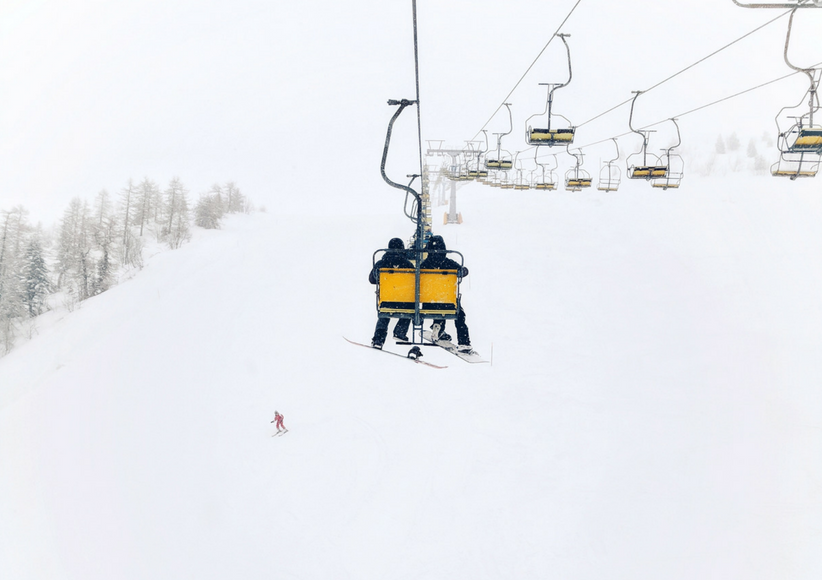
How often do you think about customer experience? If you are a product manager, marketer, or business strategist, the answer is likely “quite a bit.” For these professionals, every purchase, event, and brand interaction possesses potential customer experience insight, at least as long as you are paying attention.
This was the case during a recent weekend I spent skiing in Steamboat, Colorado. I dove into the mobile app, paid attention to sign and map placement on the mountain, and interrogated my friends about their own skiing experiences. By the time the weekend was over, my investigations had certainly generated a few critical insights on building an exceptional customer experience. Now, let’s hit the slopes and explore some key customer experience lessons.
Insight #1: Give Customers Multiple Ways to Get What They Need
Customer experience is often defined as the sum of a series of interactions between a customer and a company, organization, or offering. While this can encompass hundreds, if not thousands, of specific interactions, a significant share of them are incorporated in a few key actions that nearly every customer will complete. These are the critical elements of the customer experience.
For instance, a retailer’s Facebook cover image, interior lighting, and store pamphlets are aspects of its customer experience, but each of those pieces is not equivalent. Elements that relate to browsing the store or purchasing an item should be given higher priority since every customer experiences them. When it comes to the skiing experience, one of these core elements every skier encounters is navigating the mountain.
Steamboat Resort understands that mountain navigation is critical to the skiing experience. Knowing the wide variety of skiers served, Steamboat offers several tools for navigation to make sure every customer can have a positive experience. Mobile app maps, foldable paper maps, and large map boards all serve the same purpose for different slices of this customer base and for different points in the customer journey. However, the mountain still has room to improve. Enhancements, like placing maps on chairlifts and at major slope intersections or stationing employees by the map boards to answer skier questions, could help the resort increase its coverage of this critical interaction.

Terrain map in the Steamboat mobile app.
Insight #2: Innovation Is Cool, but Be Careful With the Expectation Game
Anyone who has skied with a big group before has a story about getting separated on the mountain. It makes sense that some people will accidentally split off: skiers vary in skill level, tend to wear similar clothing, and usually move quickly. Not to mention the skiers like myself who leave their glasses at home, limiting their vision on the mountain. As you can imagine, I was excited to discover a feature called Glympse on Steamboat’s mobile app.
Glympse is a feature that lets users create a group of skiers and track one another’s locations while on the mountain. In theory, it’s simple: join a group, turn on your location data, and select who you want to see on the map. Well, I should have known it was too good to be true. In addition to getting separated, another standard skiing issue is poor cellular service. Once our group got on the mountain and inevitably split up, we realized the feature did not work as advertised. Some people saw icons for group members in the wrong locations, while some did not see anything at all.
This may not seem like a big deal or something that would negatively impact the customer experience. After all, I had not expected the Glympse functionality when I first downloaded the app. But this perspective misses a key aspect of flashy new features. When I signed up for the exciting new feature, my expectations for my experience were immediately raised. More importantly, I took actions based on those expectations. As a group, we did not take our normal steps to keep organized. When we got separated, it was much more difficult to find our way back together again. What could have been a great customer experience benefit turned into a negative experience due to missed expectations.
Insight #3: Plan for the Things You Cannot Control
It is an unfortunate reality that some crucial elements of the customer experience are entirely beyond the control of the company. What lawyers call force majeure and insurers call inherent vice is something most businesses are familiar with. A common example is flight cancellations due to winter storms. While airlines cannot control the weather, the experience of flyers stranded at airports for hours or even days has huge implications for the airline’s customer experience.
Airlines cannot control these events, but they can plan for and respond to them swiftly and appropriately when they occur. For stranded passengers, recent news stories have featured airlines ordering pizza or buying blankets and other supplies to make a bad experience a little less bad. Customers may be upset in these scenarios, but they also understand that businesses only have so much power. More importantly, customers respond positively when they see businesses go above and beyond to make up for an unfortunate situation.
During my ski trip, there were two situations that highlighted this point. The first comes from a friend of mine. As she was skiing to our lodge, she passed a skier who took a nasty fall. After talking with the skier, she realized he was concussed and needed help getting off the mountain. Luckily, the Steamboat app has a great feature that lets users call Ski Patrol and share their location on the mountain. A mountain resort cannot prevent injuries, but they can make skiing safer by helping skiers get the help they need quickly and easily.


Ski Patrol functionality in the Steamboat mobile app.
The second example relates to snowfall. This past year Colorado experienced one of its worst snowfall seasons in a generation, which has had a big impact on ski mountains. Ski resorts can make a small impact on this by using artificial snow, but that is used primarily to augment existing snowfall, not to replace nonexistent snowfall. While Steamboat cannot change the weather, the resort does have some innovative approaches to generating revenue when snow is light. Ancillaries and options like Night Skiing, Moonlight Showshoe, and First Tracks provide fun options that are less dependent on fresh powder for a positive experience.
Wrapping Up
Everyday experience can be a great teacher, and I believe this is the case when it comes to customer experience. Every customer experience professional is also a customer, and our own interactions and experiences can be a powerful tool if studied carefully. Next time you make a big purchase or attend a fun event, take a few minutes to explore what worked well and what worked poorly. You never know where you might find your next great customer experience inspiration.

Credera’s unofficial ski team enjoying the snow in Steamboat.
Interested in Credera’s approach to improving customer experience? Reach out to us marketing@credera.com to learn how we can help.
Contact Us
Let's talk!
We're ready to help turn your biggest challenges into your biggest advantages.
Searching for a new career?
View job openings